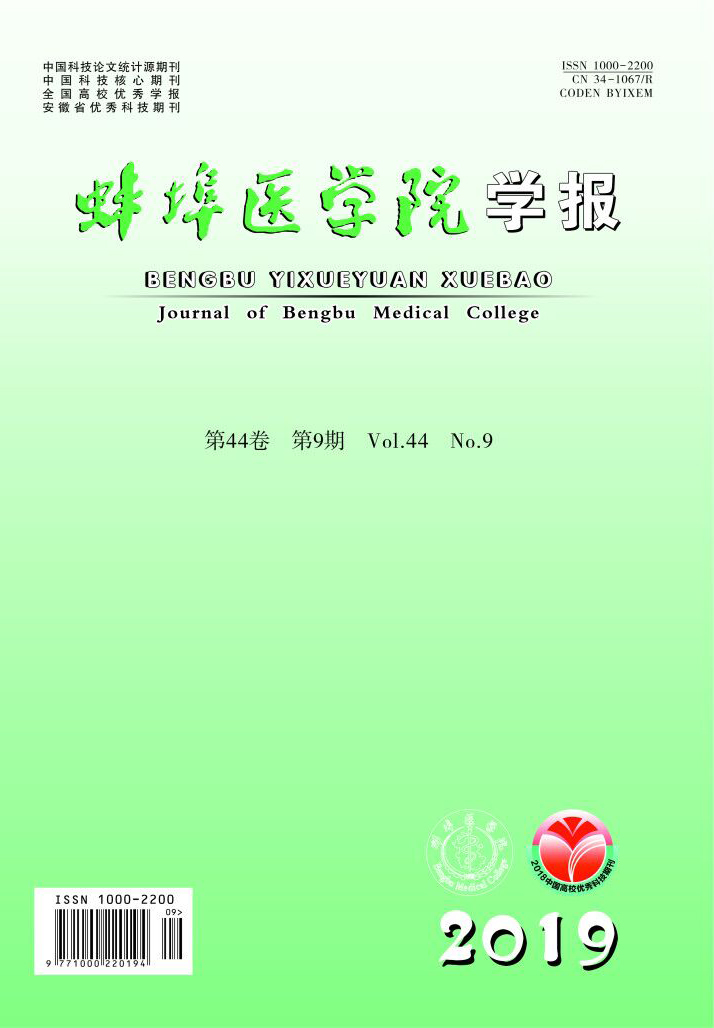-
随着我国计划生育政策的改变,即二胎政策的执行,瘢痕子宫再次妊娠剖宫产(即二次剖宫产)数量急剧增加。硬膜外麻醉是产科最常用麻醉方法之一,优点是安全性高,并发症较少;缺点是起效较慢,阻滞不全,多次进行硬膜外麻醉的病人尤其明显。研究[1-2]显示,阿片类药物和局麻药物联合使用可以增强麻醉效果,但现对其安全性仍存有顾虑。舒芬太尼禁止静脉使用于产科麻醉,更多是使用于分娩镇痛,原因是舒芬太尼静脉注射后胎盘转运速率快,胎儿脐静脉与母体静脉血药浓度比值达到0.81;且婴儿的舒芬太尼血浆蛋白结合率低,游离浓度高,半衰期延长,硬膜外注射舒芬太尼血浆浓度可在数分钟内到达高峰, 可能使婴儿发生呼吸抑制[3-4]。本研究探讨硬膜外麻醉情况下舒芬太尼联合罗哌卡因的麻醉效果及其对胎儿呼吸的影响,为临床用药提供参考。现作报道。
HTML
-
选择瘢痕子宫再次妊娠足月剖宫产产妇40例,年龄27~40岁,体质量59~95 kg,ASA分级Ⅰ~Ⅱ级。随机分为舒芬太尼+罗哌卡因组(S组)和罗哌卡因组(R组),各20例。所有产妇均不用术前药物,无局麻药和阿片类药物禁忌证,至少一次椎管内麻醉剖宫产史。排除合并妊娠期高血压综合症、子痫前期、胎儿宫内生长受限、胎儿宫内窘迫等及其他严重疾患。2组产妇年龄、身高、体质量、术中出血量和输液量差异均无统计学意义(P>0.05)(见表 1),具有可比性。本研究经医院伦理委员会批准,所有产妇均签署知情同意书。
分组 年龄/岁 身高/cm 体质量/kg 术中出血量/mL 输液量/mL S组 32.6±3.2 161.4±4.3 72.0±7.9 535±90 1 310±252 R组 32.8±3.4 161.2±3.9 72.6±7.7 545±83 1 348±221 t 0.19 0.15 0.24 0.37 0.51 P >0.05 >0.05 >0.05 >0.05 >0.05 -
入室后监测上肢无创血压、心率(HR)、心电图和经皮脉搏血氧饱和度(SpO2),建立上肢静脉输液通路,于30 min内静脉快速输注钠钾镁钙葡萄糖注射液500 mL。病人取左侧屈膝卧位,首选L1~2间隙穿刺,如遇穿刺失败则替换为L2~3间隙穿刺,向头侧置管4 cm,试验剂量2%盐酸利多卡因3 mL匀速注入。5 min后证实在硬膜外腔内则注入手术量局麻药物,S组硬膜外腔注入0.75%甲磺酸罗哌卡因10 mL混合舒芬太尼10 μg;R组硬膜外腔注入0.75%甲磺酸罗哌卡因10 mL,2组均在60 s内将药液单次匀速注入,等待麻醉平面固定后调整手术床为左倾30°。术中如因牵拉反应或疼痛使病人不适可给予哌替啶50 mg;收缩压低于90 mmHg时静脉注射麻黄碱5~10 mg;HR < 50次/分时静脉注射阿托品0.5 mg;HR>120次/分时静脉注射艾司洛尔10 mg。
-
硬膜外腔注药后30 min内采用针刺法测定麻醉感觉阻滞平面并记录。记录2组产妇麻醉起效时间(从注药后至感觉阻滞平面达T10的时间)、镇痛持续时间(从给药开始到切口出现疼痛的时间)、麻醉中不良反应(心动过缓、呕吐、寒战、瘙痒、恶心、低血压等)及新生儿娩出后1 min、5 min Apgar评分,新生儿娩出后1、2、3、4、5 min右腕桡动脉SpO2,采集新生儿出生即刻脐静、动脉血,采用GEM 3500型全自动血气分析仪检测进行血气分析。
-
从牵拉反应、镇痛效果及肌松三方面进行评定麻醉效果。优:产妇术中未出现牵拉感和疼痛感,肌肉松弛情况良好;良:产妇术中出现轻度牵拉感及轻微疼痛感,肌肉较松弛;差:产妇术中出现严重的牵拉感和明显的疼痛感,肌肉紧张,需静脉辅助用药或加用局麻药物。所有的静脉辅助用药均在新生儿分娩后使用。
-
采用t检验、χ2检验和秩和检验。
1.1. 一般资料
1.2. 麻醉方法
1.3. 观察指标
1.4. 麻醉效果评价
1.5. 统计学方法
-
S组产妇麻醉起效时间明显短于R组,镇痛持续时间明显长于R组(P < 0.01),麻醉效果优于R组(P < 0.05)(见表 2)。术中S组需静脉注射哌替啶4例(20.00%),R组11例(55.00%),且其中2例需追加哌替啶25 mg。2组产妇麻醉不良反应差异无统计学意义(P>0.05)(见表 3)。
分组 麻醉起效时间/min 麻醉持续时间/min 麻醉效果 优 良 差 S组 7.7±1.2 362±87 11 6 3 R组 9.9±2.0 271±62 4 8 8 t 4.22 3.81 2.36* P < 0.01 < 0.01 < 0.05 *示uc值 分组 n 心动过缓 寒战 呕吐 恶心 低血压 χ2 P S组 20 1 2 1 1 3 R组 20 1 3 1 2 2 0.75 >0.05 合计 40 2 5 2 3 5 -
2组新生儿娩出后1 min、5 min Apgar评分和1、2、3、4、5 min右桡动脉SpO2差异均无统计学意义(P>0.05)(见表 4),新生儿出生即刻脐静脉、脐动脉血气分析显示,2组pH值、二氧化碳分压(PCO2)、氧分压(PO2)、乳酸浓度(Lac)、HCO3-、剩余碱(BE)差异亦均无统计学意义(P>0.05)(见表 5)。
分组 Apgar评分/分 SpO2/% 1 min 5 min 1 min 2 min 3 min 4 min 5 min S组 9.95±0.22 10.00±0.00 62.5±4.7 68.9±4.5 74.0±4.1 79.3±4.5 85.4±4.2 R组 10.00±0.00 10.00±0.00 61.8±4.1 68.0±4.4 74.4±3.3 78.9±4.2 85.1±4.1 t 1.02 0.00 0.50 0.64 0.34 0.29 0.23 P >0.05 >0.05 >0.05 >0.05 >0.05 >0.05 >0.05 分组 pH PCO2/mmHg PO2/mmHg Lac/(mmol/L) HCO3-/(mmol/L) BE/(mmol/L) 脐静脉 S组 7.37±0.02 42.22±3.27 28.33±5.83 1.24±0.25 24.18±1.18 -1.18±1.08 R组 7.38±0.03 41.38±3.88 27.90±5.72 1.25±0.26 24.35±1.28 -1.14±1.05 t 1.24 0.74 0.24 0.12 0.44 0.12 P >0.05 >0.05 >0.05 >0.05 >0.05 >0.05 脐动脉 S组 7.30±0.02 53.02±4.20 11.98±2.22 1.27±0.25 25.83±1.92 0.38±1.98 R组 7.31±0.02 52.29±4.06 12.71±2.36 1.26±0.24 26.63±1.76 0.43±2.00 t 1.58 0.56 1.01 0.13 1.37 0.08 P >0.05 >0.05 >0.05 >0.05 >0.05 >0.05
2.1. 2组产妇麻醉相关指标比较
2.2. 2组新生儿相关指标比较
-
我国计划生育政策的改革,增加了产科病人数量和二次剖宫产数量,对麻醉也提出了更高的要求。因考虑母婴安全,剖宫产手术首选椎管内麻醉,其中硬膜外麻醉是剖宫产手术最常选用的方法之一。由于硬膜外麻醉本身可能存在麻醉阻滞不全,特别是第一次麻醉后的硬膜外腔粘连致使硬膜外麻醉阻滞不全的发生率及麻醉失败率增加;并且首次剖宫产后,无论横纵切口均可能存在腹壁粘连和腹腔粘连、解剖层次改变,因而致二次剖宫产手术难度增加。如果麻醉镇痛不全,腹壁肌肉紧张,牵拉反应强烈将给手术带来困难。硬膜外局麻药复合阿片类药物可以缩短麻醉起效时间,延长镇痛时间,完善麻醉效果。本研究结果显示,S组麻醉起效时间缩短,镇痛持续时间延长,麻醉优良率提高,进而有助于保障病人手术安全和手术操作顺利进行。其原因可能在于,一方面舒芬太尼脂溶性高, 易穿透脂质硬脊膜进入蛛网膜下腔, 作用于脊髓组织或更高中枢的阿片受体, 产生迅速强烈的镇痛作用;另一方面舒芬太尼可与局麻药产生协同作用,增强局麻药的感觉和运动阻滞效果。
脐血血气分析能够敏感、定量与定性分析组织缺氧、酸碱失衡实际状况, 在胎儿反应抑制状态尚未出现前, 血气分析即可以表现出异常[5]。脐静脉血气值不仅反映胎儿娩出前机体内的血气及酸碱代谢状态,还反映胎盘功能和胎儿情况。胎儿缺氧时pH、PO2降低,PCO2、BE、HCO3-升高。脐动脉pH值< 7.1时,随着pH值降低,出现窒息和内脏并发症比率也逐步升高[6]。并且随着脐血pH值的降低,Apgar评分4~7分、<4分出现率均逐渐升高,新生儿发生窒息的可能性增大[7]。本研究结果显示,S组pH、PCO2、PO2、Lac、HCO3-、BE均在正常水平范围内,与R组比较差异无统计学意义,胎儿未发生宫内酸碱代谢紊乱、缺氧、二氧化碳蓄积、乳酸堆积等情况,提示舒芬太尼进入血液循环较少,对产妇及胎儿呼吸氧合、酸碱内环境无明显影响。
Apgar评分及SpO2反映了新生儿出生后的呼吸氧合情况,Apgar评分是新生儿娩出后根据HR、呼吸、皮肤颜色、肌张力及运动、皱眉动作即对刺激的反应五项体征进行评分。研究[8]显示,硬膜外使用1%罗哌卡因复合舒芬太尼不影响新生儿Apgar评分。有学者[9]认为硬膜外注入舒芬太尼后母体血药浓度很低,胎儿接触更少,对新生儿神经行为评分及呼吸功能影响较小。本研究结果显示,2组新生儿出生后1 min、5 min Apgar评分无明显差异,1、2、3、4、5 min右桡动脉SpO2亦均在正常范围内,差异亦无统计学意义。证实硬膜外使用舒芬太尼通过硬膜外腔进入血液循环少,透过胎盘屏障对胎儿影响有限, 新生儿未见明显呼吸抑制, 对新生儿Apgar评分也无影响。
综上, 产妇使用舒芬太尼复合罗哌卡因硬膜外麻醉下行二次剖宫产术, 可有效增强麻醉效果, 提高麻醉质量, 且对胎儿的氧合、酸碱代谢无不良影响, 对娩出后的新生儿呼吸无明显抑制, 值得临床推广。






 DownLoad:
DownLoad: